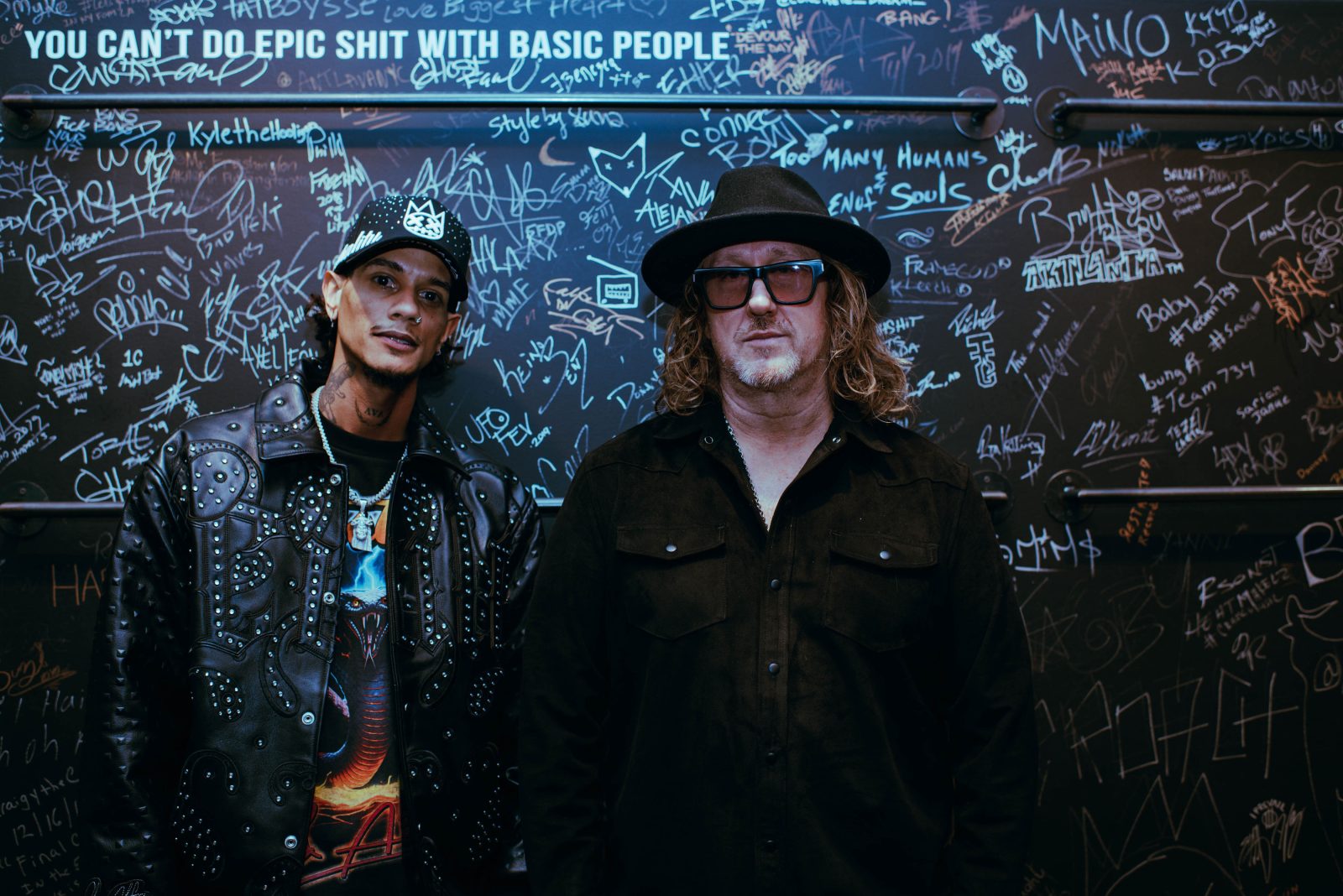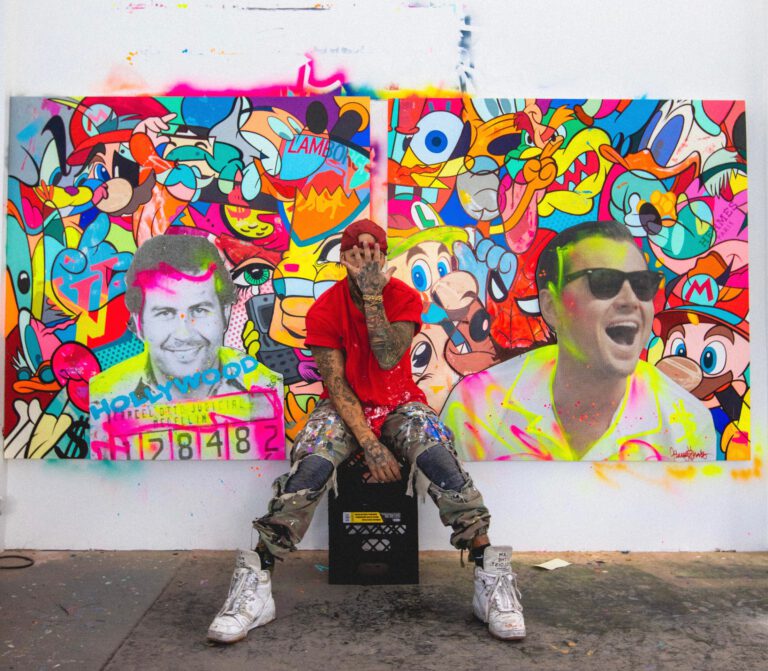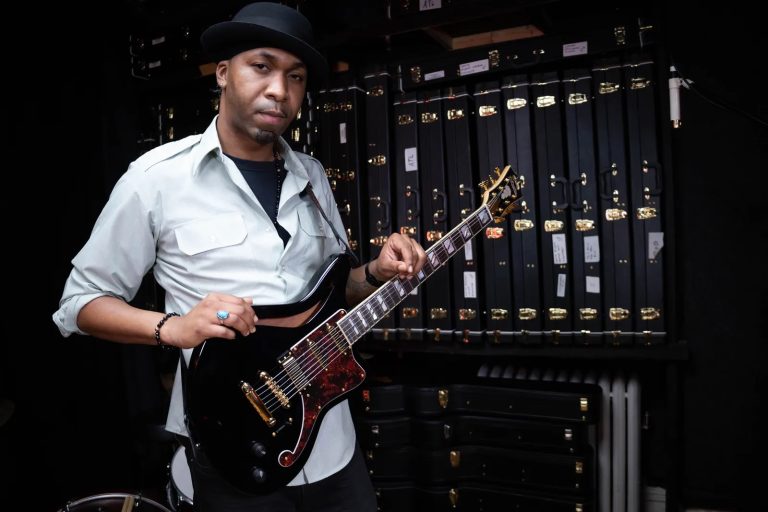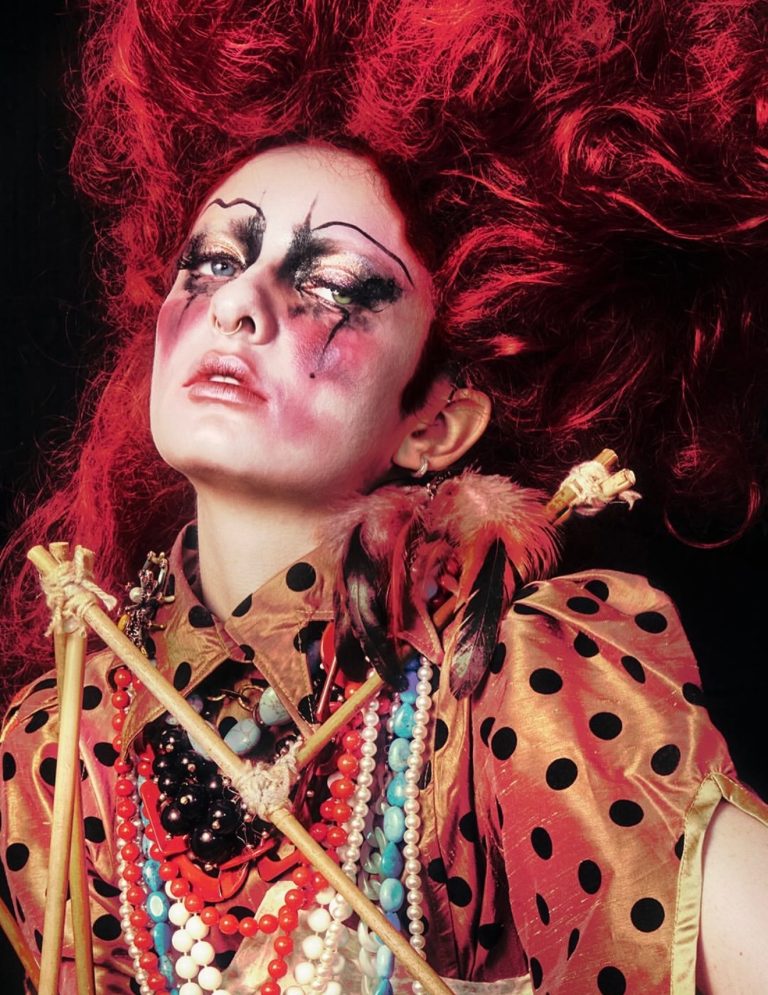How a Kid from Providence and a Denim Lifer from Woonsocket Built a Global Streetwear Force in NYC

WHEN you walk into Cult of Individuality’s headquarters, it feels less like a fashion office and more like a living archive of culture. Denim hangs in every wash and shade. Jackets are stacked with patches, studs, and embroidery. Racks of samples line the walls, surrounded by mood boards, music posters, and photos of artists from rock, hip-hop and Latin music who have adopted the brand as their unofficial uniform.
The two men at the center of it all could not be more different, yet completely aligned.
One is Ron Poisson, a Rhode Island-raised veteran of the surf and denim industry who turned a deep obsession with jeans into a movement. The other is Angelo Rosa, a Dominican-American designer from Providence whose journey from home-ec sewing machines to Project Runway and global streetwear has made him one of the most exciting creative voices in menswear today.
Together, they are the engine behind Cult of Individuality—a brand rooted in quality and music, built on defiance, and fiercely devoted to the people who refuse to fit neatly into any box.

‘DENIM IS A CULT PHENOMENON’
Ron doesn’t waste time with small talk when you ask how it all began.
“So I have 30 plus years. I grew up in Rhode Island, moved to New York City in 1991 working in the surf industry. I was working with OP and Mossimo,” he tells me, matter-of-factly.
From early on, he wasn’t just working with clothes; he was studying them. How they were washed. How they wore in. How they made people feel.
“Fast forward to 2008, [I] came up with the concept of Cult of Individuality. It was called the name… it’s an oxymoron, right? You can’t be in a cult, but be an individual.”
The contradiction is the point.
“The premise of the brand originally is it was founded on denim and recreating this denim that was vintage in nature and looked like you’ve had it for years and years and years,” Ron says. “Denim is really the foundation of American fashion. I feel everybody’s got jeans, but it’s that individual expression of who you are, and that’s really where the name comes from. So denim is a cult phenomenon, but the individual expression of who you are…”
That duality—communal yet personal—became the backbone of Cult’s identity.
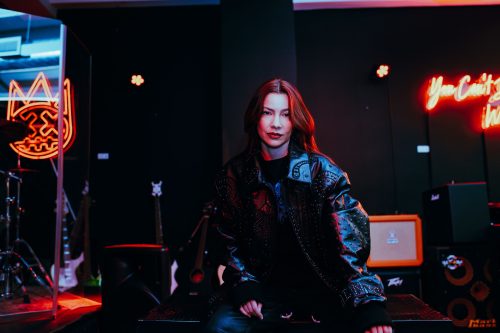
“The roots and the vibe, the general demeanor of the brand is music,” he adds. “When we started it, we found the music community really embracing what the brand stood for.”
Very quickly, musicians and artists started showing up in Cult denim on stage, at award shows, and in backstage moments. Buyers and department stores tried to categorize the brand—“Are you surf? Skate? Couture? Luxury? Hip-hop?”
Ron pushed back.
“For us, we became a lifestyle brand rooted in music that celebrated and encouraged individual personalities,” he says. “We celebrate the Renaissance man, the think-outside-the-box, the non-conformist.”
He sees Cult as a brand for the kids who were told their music was too loud, their clothes too strange, their sources of information too unconventional.
“We’re a brand that celebrates that individuality within people,” he says. “Not many brands really get that. So that’s our mantra… like, be you. Don’t be told what to do, who to be with. That’s really the energy of this brand and the spirit it embraces.”
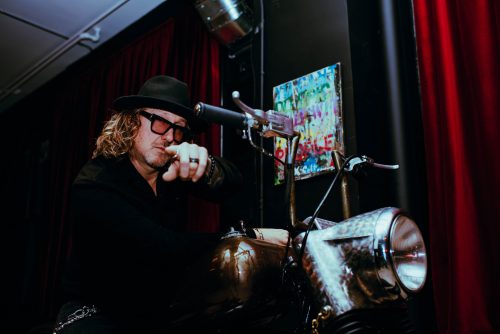
FROM EIGHT PAIRS OF JEANS TO A LIFESTYLE BRAND
When Cult first hit the market in 2009, it launched with just eight pairs of jeans.
“We started in denim, eight pairs of jeans, back in 2009 and we’ve grown to a full lifestyle brand in all different categories,” Ron says.
The timing, on paper, was terrible.
“We basically started selling the product in 2008, fourth quarter… that’s when the economy actually crashed. It was horrendous. But there were opportunities. We came out with a strategy… we came in at a $45 wholesale for a $135 retail,” Ron says. “We were giving a triple margin, which was unheard of. So when the economy was bad… we sat next to Diesel, Replay, Double RL, PRPS — same exact quality, at a better price.”
The first mantra of the brand, he says, has never changed:
“Quality first. Cult of Individuality is a brand that’s built to last a lifetime. We pride ourselves on our quality. We pride ourselves on styling that you could pull out next winter and not feel outdated, and the quality holds up.”
That commitment became even more important as fast fashion took over and “disposable” clothing became the norm.
“That is the complete opposite mantra of what Cult of Individuality is,” Ron says. “Now you see affordable options out there… youth shopping thrift, looking for luxury at thrift levels… But the biggest thing for any brand or any musician is always trying to be connected to the youth. If you age out and do not attract a younger audience, at some point, your audience is going to age out.”
Staying young, he realized, would require more than a great wash recipe.
It would require new blood.
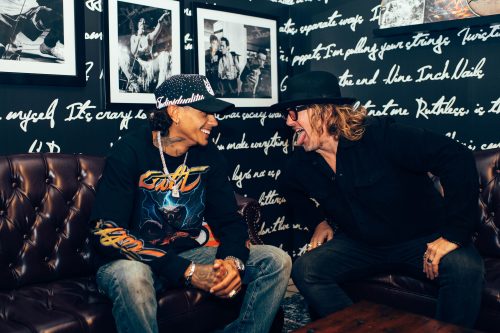
ENTER ANGELO ROSA
If Ron is the architect, Angelo is the engine.
“So I’m originally from Providence, Rhode Island. I went to Johnson & Wales for fashion merchandising,” Angelo told me. “And then I had a professor who pretty much saw the vision, believed in me, and was like, ‘Hey, I feel like you need to not stay here. You need to go get your bachelor’s in women’s design.’”
She helped him build a portfolio, apply to schools, and get to New York.
“I packed my stuff and moved here, and I went to the Art Institute for women’s design. That’s really when my fashion journey started.”
He started in womenswear, then bounced across the industry:
“I did a little bit of streetwear, did a little bit of kids, did a little bit of almost everything to try to see what fit the best,” he says. “The last company before I started working at Cult was Iconix… I was doing Starter and Umbro. So it was athletic wear. I was just getting tired of the job. It was not fun. It wasn’t challenging. It was very, very boring.”
Fed up, he did what many creatives do at a crossroads: he went online.

“I saw the posting for Cult, and in my eyes, it was a dream job,” he says. “It was everything I was looking for. It involved traveling to China, getting in depth with the denim industry, which I knew very little about. But like Ron said, my strongest points have always been trend analysis, high-end luxury clothing, fabrications and just cut-and-sew.”
He still remembers the interview vividly.
“I was wearing a pair of my own jeans,” Angelo says. “Ron was like, ‘Oh, those jeans are dope. Who made them?’ I was like, ‘I did.’”
Then came the twist of fate:
“It was crazy, because he’s from Rhode Island and I’m from Rhode Island. I usually start my interviews with ‘I’m from Rhode Island,’ so it was like an instant click.”
For Ron, the connection went even deeper. After Angelo left the interview, Ron got a call from an old friend, designer Duane Pelletier.
“[He] was like, ‘Hey man, did you just interview Angelo Rosa?’” Ron recalls. “And I said, ‘Yeah.’ He’s like, ‘I’m gonna tell you right now. The guy is a beast. You’d be lucky to have him.’”
Ron hired him initially to do graphic work, but quickly realized Angelo’s skills couldn’t be boxed into one category.
“What we were looking for and what he’s become today are light years apart,” Ron says. “To see him grow and blossom as a designer and an individual has been special to watch. Angelo’s forte is really his pulse on fashion, his cut-and-sew, his ability to analyze trends, his understanding of novelty.”
Ron ended up hiring someone else for graphics, freeing Angelo to design across the brand.
Angelo hasn’t looked back.
“To be honest, it’s been the best decision I’ve ever made,” he says. “He’s like a father figure, like a brother. We’ve grown so much. I spend most of my time around him than anybody else. It’s amazing to see the evolution of the brand from when I started to now. I’m so grateful that he’s given me the opportunity to spread my wings and trusts me to be the head designer of the brand.”
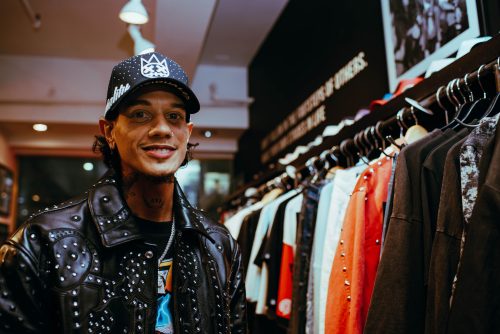
MUSIC IS THE BLOODSTREAM
At Cult, music isn’t a marketing angle. It’s the bloodstream.
“I mean, the thing about our brand is that it hits on everybody from legend status to new and up-and-coming and multicultural, which is really unique,” Ron says. “You can have Slash from Guns N’ Roses wearing the stuff, you know, I saw 50 [Cent] wearing the stuff… Carrie Underwood in country. Tommy Lee from Mötley Crüe. A lot of the current 20-year-old bands being played on SiriusXM and Octane.”
The diversity of the artists mirrors the diversity inside the company.
“Angelo from the Latin sense, my marketing team that is African-American, me Caucasian — there’s so many different influences that come into this brand,” Ron says. “As you go and you look at the collection, it just resonates. If you want to put on a nice heavyweight sweatshirt and a clean pair of jeans, you can rock it that way. Most of our rock stars want to go street-wear. Most of our hip-hop and Latin artists want to dress like rock stars.”

Angelo breaks it down by genre.
“Start with Latin,” he says. “We have El Alfa, who Ron mentioned. We’ve had Angel from Puerto Rico, Daddy Yankee, Plan B. We’ve had Fonsi, Messiah… so many up-and-coming artists from Dominican Republic, Puerto Rico, Colombia, South America. We’ve had the biggest names in the Spanish industry.”
Hip-hop has embraced the brand just as hard.
“When it comes to hip-hop, we’ve had Swizz Beatz, ScarLip, Maino, Jadakiss, 50 Cent, Ghostface, Chris Brown,” Angelo says. “We’ve been lucky that a lot of the artists we deal with, we’ve built relationships and they’ve become kind of like family.”
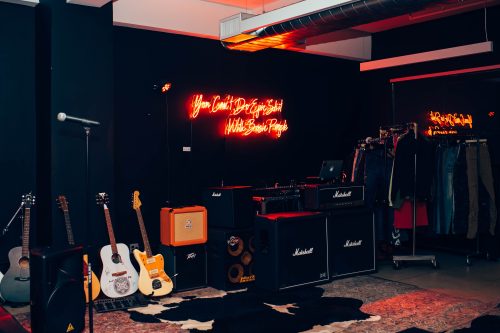
What’s most impressive: Cult doesn’t pay for placements.
“We don’t pay any artists to wear the brand,” Angelo says. “They come in, they believe in the brand, they see what we’re doing, and they rock with us, which is amazing.”
One of the most powerful — and bittersweet — proof points came near the end of DMX’s life, when one of his final iconic appearances captured him in a Cult tee. For a kid from Rhode Island who once worshipped those artists from afar, seeing his work on an undeniable legend was “game-changing,” Ron tells me.
“There were points in my life growing up in Rhode Island and moving to New York in the early ’90s — which I think was the most iconic music period, whether rock or hip-hop — and now I can scroll my phone and those people are on speed dial,” he says. “Never in a million years did that little pimply-faced kid think that would happen.”
It’s why he’s never forgotten the role his parents played in letting him express himself, even when his outfits raised eyebrows at family gatherings.
“I wouldn’t be here now if it wasn’t for my parents letting me be me,” Ron says.
In many ways, that’s the whole thesis of Cult: the brand is the parent saying “go ahead, be yourself” to a new generation.

ANGELO’S TURN ON PROJECT RUNWAY
Angelo’s personal star rose further with his appearance on Season 21 of Project Runway, a full-circle moment for a designer who watched the show religiously for years.
“Overall, it was a really, really cool experience,” he says. “Being on the show, meeting the cast members like Madeline — who’s also going to be shown at the Runway Ball — we kind of created a family.”
The pace was unlike anything he’d experienced.
“It was really good to experience the fast pace of having only 14 hours to create a full garment, from concept to actual design — sitting there sewing, running around, trying to get the steamers to work, learning all the new sewing machines, and at the same time having cameras in front of you 24/7.”
He didn’t last as long as he’d hoped.
“I wish I would have lasted a lot longer, but it is what it is,” he says with a shrug. “Overall, I’m just grateful to be part of it. It was something I’ve always wanted to do. I’ve watched the show since season one. So to be on Season 21 — and that’s the season that Heidi came back — was really, really cool.”
The show also forced him to switch gears creatively.
“I studied women’s design, then stopped working on womenswear and switched to men,” he says. “So to reprogram my brain to get back into creating the patterns… it was cool but also a little frustrating, because I didn’t really have as much time to prepare. But I gave it my best shot, and I’m grateful for the opportunity.”

BOSTON, THE RUNWAY BALL & A SLEEPING FASHION CITY
When we start talking about Boston, Angelo lights up.
“For me, when I lived in Rhode Island, Boston was the closest thing to any kind of fashion state besides New York,” he says. “So I would go to Concepts, go to all the stores on Newbury like Riccardi’s. All the malls there had the more expensive brands.”
He’s adamant that the city has a style culture; it’s just under-amplified.
“I think it has a fashion scene, it’s just not as exposed as it really should be,” he says. “Your two biggest stores, I would say, for the streetwear industry, are Concepts and Bodega. When streetwear first hit, they were like the two biggest stores worldwide because of the concepts of the stores.”
Boston’s fashion, he says with a grin, is “definitely better than Rhode Island, because Providence has no fashion.”
At Season 3 of The Runway Ball on December 14th -New England’s winter fashion showcase- Angelo and Cult will be showing fifteen looks.
“All fifteen looks are so different,” he says. “Depending on who the customer is, they can wear it so many different ways, but it’s going to be very eclectic.”
Ron, who splits his time between New York and trips back to New England, has his own perspective on the regional differences.
“Sometimes when you’re living in New York City, you can get caught up thinking the entire country is exactly like New York, and it’s not,” he says. “New York and L.A. move a little faster than other cities. When you look at Boston, Chicago, other cities, everything matriculates there — it just takes a little bit longer for the ripples to reach.”
The trick, he says, is staying relevant to multiple cities without losing the brand’s core.
“As a company, you can’t be everything to everyone, but we always strive to make sure whatever trend is represented in different regions is reflected,” Ron says. “You can’t make everyone happy, but you can try.”

A CULT BUILT TO LAST
Toward the end of our conversation, I ask both men what keeps them going — why, in an industry defined by churn and burnout, they’re still pushing this hard.
For Ron, it comes back to soul.
“With clothing, the one thing I learned in the surf industry is that you’ve got to have a living, breathing soul for people to want to be a part of something,” he says. “We always use the word ‘inspire.’ How do you inspire people to greatness? How do you encourage them to blossom? That’s really what our brand is about.”
For Angelo, it’s gratitude — and responsibility.
“I’m so grateful to have him,” he says of Ron. “Grateful that he’s given me the opportunity to let me spread my wings. We push boundaries, we prioritize quality, and we keep evolving. I want kids to look at what we’ve done and see that it’s possible.”

And for both, it’s that kid — the one in Providence or Boston or any other city — who feels a little out of place in their family, in their school, in their town, but knows there’s something special about not fitting in.
Cult of Individuality is for that kid.
A brand born from eight pairs of jeans at the height of a recession has grown into a global lifestyle label worn by rock legends, Latin superstars, rappers, and everyday people who want their clothes to say something real.
You can call it streetwear. You can call it premium denim. You can call it music culture.
But to Ron and Angelo, it’s simpler than that.
It’s a cult.
And paradoxically — beautifully — it’s for individuals.
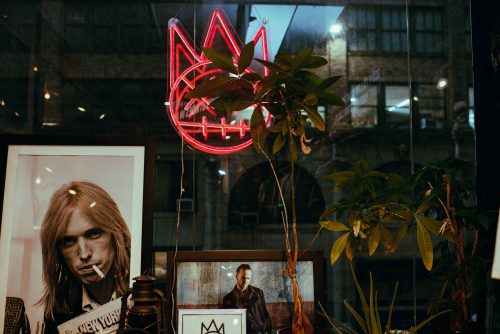
For tickets to see Angelo Rosa and Cult of Individuality showcased at Boston’s 3rd Annual Runway Ball on December 14th at Hilton Boston Park Plaza, please click HERE.

